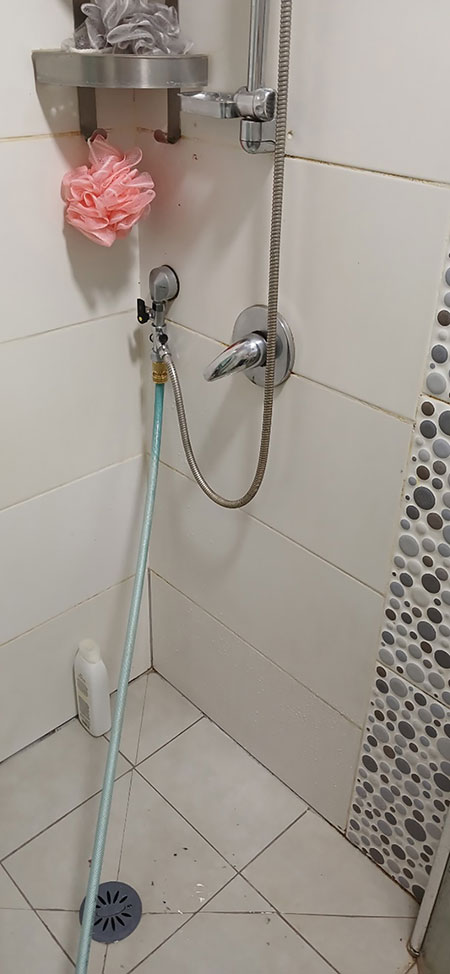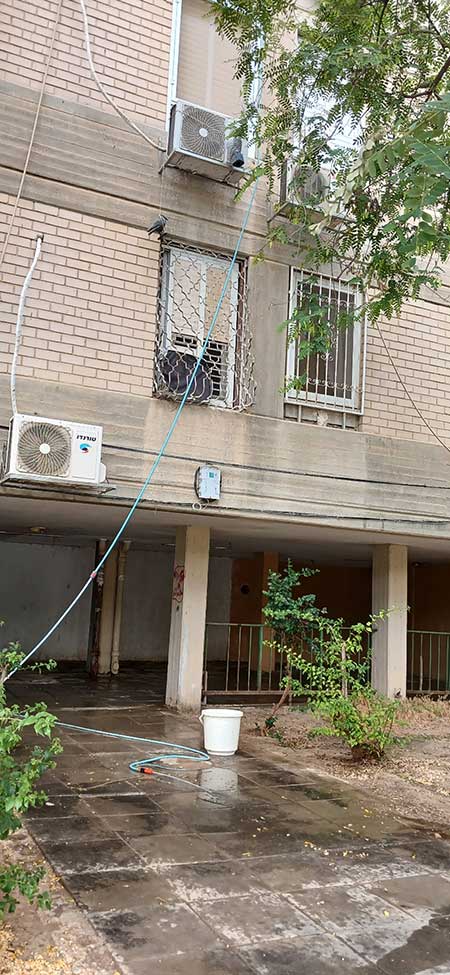
In the September issue of Pumps & Systems, a question was posed to our readers about water consumption and the cost of watering a small residential garden. As a reminder, we have included the images that accompanied the first article as well as the questions that were posed to readers.
Case 1
Watering from a 150-foot garden hose (0.37-inch opening) for 30 minutes, 1-2 times per week at a rate of approximately 2.5 gallons per minute (gpm), with a supply pressure of approximately 60 pounds per square inch gauge (psig). The cost of water is approximately $1 per 100 gallons.
.jpg)
Case 2
Watering from the same hose attached to a third-floor shower room water spigot. The water rate dropped in half.


Alternative connection (installing a splitter at the whole spigot) via a third-floor shower spigot
Quiz Question
Make a rough estimate of the cost of watering the garden in each case. Make any simplifying assumptions for your calculations—keep it practical.
In the first case, the garden hose was connected to a main water supply at the ground level at 60 psig. First, calculate flow velocity, V = Q/A x 0.321, where “Q” is the flow rate in gpm, “A” is the pipe (actually hose) flow area and 0.321 is the conversation coefficient for calculation in U.S. units: V = 2.5 / (3.14 / 4) x 0.372 x 0.321= 7.5 feet per second (ft/sec)
Friction loss in the pipe (tubing) is, per Moody diagram of a formula:
Hf = f x L/D x V2 / 2g, where “f” is the friction coefficient (typically 0.03 for new pipe or tubing), “L/D” is hose length divided by the open diameter of the hose and “g” is the gravitational constant (32.2): Hf = 0.03 x 150 / (0.37/12) x 7.52 / 64 = 128 feet = 56 psi, which is approximately equal to the available supply pressure (60 psig) driving the flow of water through the hose.
In the second case, however, there is an additional 500 feet of piping involved (150 + 500 = 650 feet) that supplies water from the main water line to the shower room spigot connection, only then flowing on through the same garden hose. This increased friction reduces the flow to what our experiment discovered (1.25 gpm): V = 1.25 / (3.14 / 4) x 0.372 x 0.321 = 3.8 ft/sec
Hf = 0.03 x 550 / (0.37/12) x 3.82 / 64 = 138 feet = 59 psi, which is, again, approximately equal to the available supply pressure
(60 psig) driving the flow of water through the hose.
To sum up, the increased length of supply piping to the house shower room increased the hydraulic resistance and reduced the flow.
As for cost, each watering takes 30 minutes, twice a week, with 2.5 gpm, making it 75 gallons per watering. In other words, 75 x twice per week x 4 weeks = 600 gallons per month, or 600 x ($1/100 gallons) = $6 per month. When dividing by 32 apartments, that comes out to be 6/32 = $0.2 per apartment—peanuts.
When emotions run high, logic may not have much chance to prevail. But, if one wants to consider the simple facts and is willing to listen, amazing progress can be made.
A parting question: Were the neighbors justified in making it difficult for a garden watering volunteer? Perhaps learning
about pumps might help make life easier for others.
References
- Nelik, L., and Goldenberg, L., “Pump Hydraulics Fundamentals: A Students’ View”, page 73, from Dr. Nelik’s book “Pumps and Pumping Systems Made Easy and Fun,” Volume 1, Amazon.
- Nelik, L., Kazakov, D., Avrukh, L., et al, “Troubleshooting HVAC Pumping Systems, Part 1 and 2”, page 238, from Dr. Nelik’s book “Pumps and Pumping Systems Made Easy and Fun,” Volume 3, Amazon.

